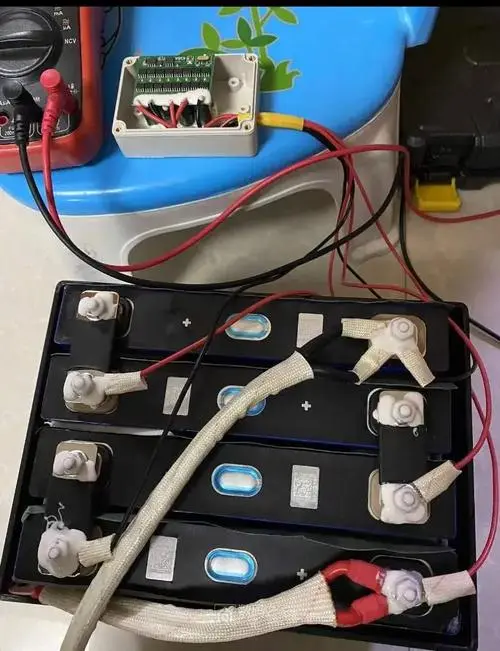It may seem like a great idea to mix different batteries into a battery pack, but this is not recommended. Combining batteries of different sizes, types, brands, and ages may seem cost-effective or convenient, but it can create more problems than solutions. We’ll explain why this is so and the issues that you may encounter if you choose to do this.
Mixing LiFePO4 batteries is not recommended
Imagine a battery pack as a team that works together. The performance of the entire team will suffer if some team members are faster or stronger than others. This is because the stronger team members must slow down in order to keep up with the slower team members. Batteries are no different. The entire pack performs at the same level as the weakest battery when you mix batteries. It can cause inconsistent output, decreased efficiency, or even safety issues like battery failure.
What happens if you mix different batteries?
- Performance of Discharge: How a battery discharges power is important. When you mix batteries of different capacities, voltages or types, weaker batteries can slow down the performance of the stronger batteries. A battery with a smaller capacity, for example, will drain more quickly, which can affect the performance of the entire pack. This imbalance could lead to an over-discharge of some batteries which can damage them or cause leaks.
- Differences in voltage: Batteries of different voltages will not discharge evenly. Batteries with higher voltages will have to lower their voltage in order to match those of lower voltages, which could cause damage and unnecessary stress.
- Mismatch : When you mix batteries of different capacities, the smaller ones drain faster. This causes an imbalance. This can lead to overworking of one or more batteries, which could damage the entire pack.
- LiFePO4 Batteries come in different shapes and types. Each type has its own peculiarities. Because they are built differently, mixing batteries with different shapes may result in inconsistent performance. It can lead to an uneven load distribution which is bad for your battery pack.
- Never mix battery chemistry: Do not mix LiFePO4 with other types of batteries, such as nickel-metal-hydride or lead-acid batteries. Each type has its unique voltage, capacity and safety characteristics. Combining them may create safety hazards, including short circuits and thermal runaway where the battery can overheat, potentially causing a fire.
- Differences in Brand Even though two batteries may have the same capacity and voltage, there can be differences in brand. Depending on the brand, there may be slight differences in manufacturing processes or materials that can cause subtle performance variations. These differences can lead to one battery wearing out faster over time than the rest, causing the pack to be off balance.
- Age & Usage History : Batteries degrade over time and can’t keep pace with newer batteries. When you mix old and new battery packs, the older batteries will be overworked. This can accelerate their degeneration and affect the performance of the entire battery pack. You want the batteries to have similar age and usage history.
Charging mixed batteries
It’s just as difficult to charge a mixture of LiFePO4 cells as it is to discharge them. If you charge batteries of different characteristics together they will not charge evenly. Some batteries may overcharge and others undercharge. This can cause the pack to be less efficient or even damage.
- Charge LiFePO4 Batteries in Parallel. The batteries will eventually balance themselves out. It’s like two connected water tanks that fill up equally, even if the larger one is bigger. To avoid potential problems, it is best to use batteries with the same capacity.
What are the drawbacks of mixing different LiFePO4 batteries?
You’ll end up with a pack of batteries that does not meet your expectations if you mix LiFePO4 cells. The weaker batteries will drag down the stronger ones, causing several problems:
- Performance Decline Over time, differences in batteries will increase. The stronger batteries degrade quicker because they compensate for the weaker ones. Your battery pack will not last as long.
- BMS Issues The Battery Management System is designed to monitor your battery pack and protect it. The BMS may struggle to perform its duties if your batteries aren’t all the same. It may fail to detect problems like overdischarge and lead to safety risks.
- Increased Damage Risk As battery differences increase, so do the risks of damage, leaks or other safety hazards. The battery pack’s inconsistent output could also damage your device.
The conclusion of the article is:
Mixing LiFePO4 Batteries is not a good idea. Use batteries that are identical in all aspects: same shape, type and brand, capacity and voltage. This guideline will ensure that your battery pack is safe, efficient, and lasts a long time.
